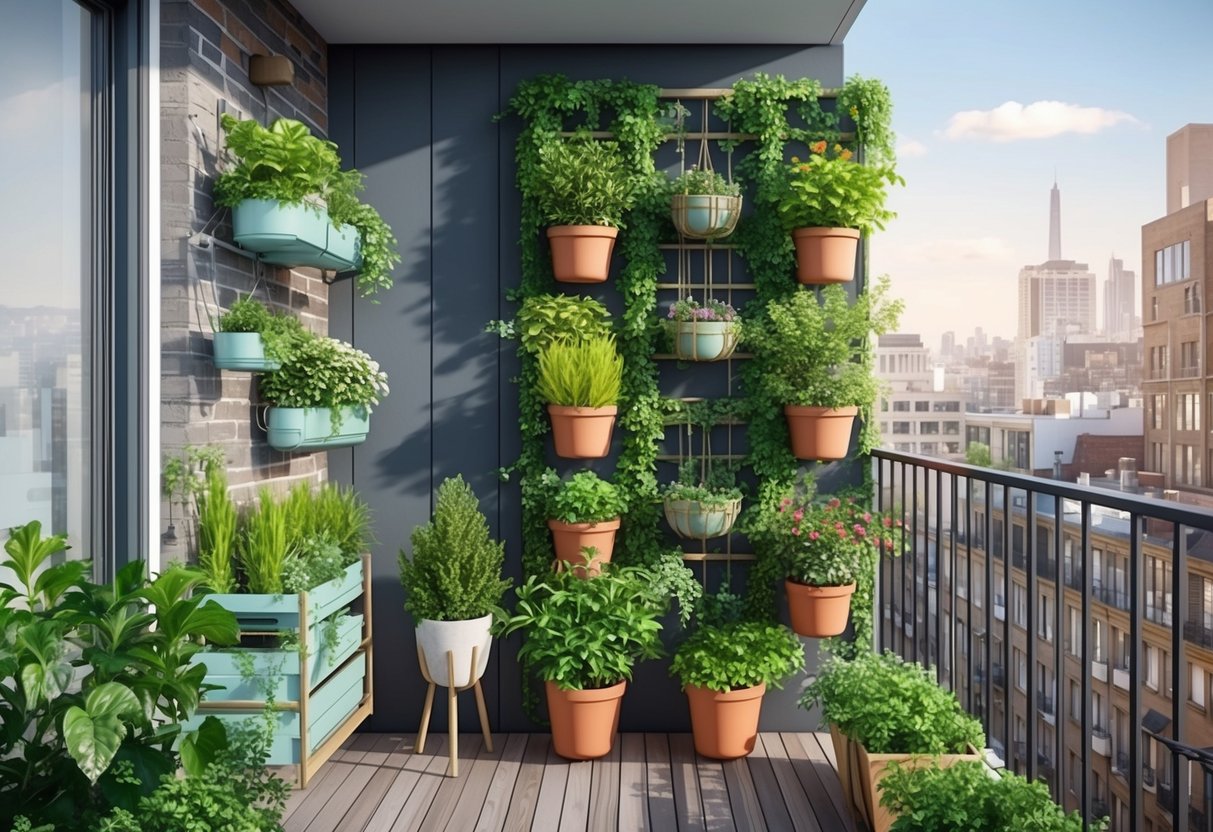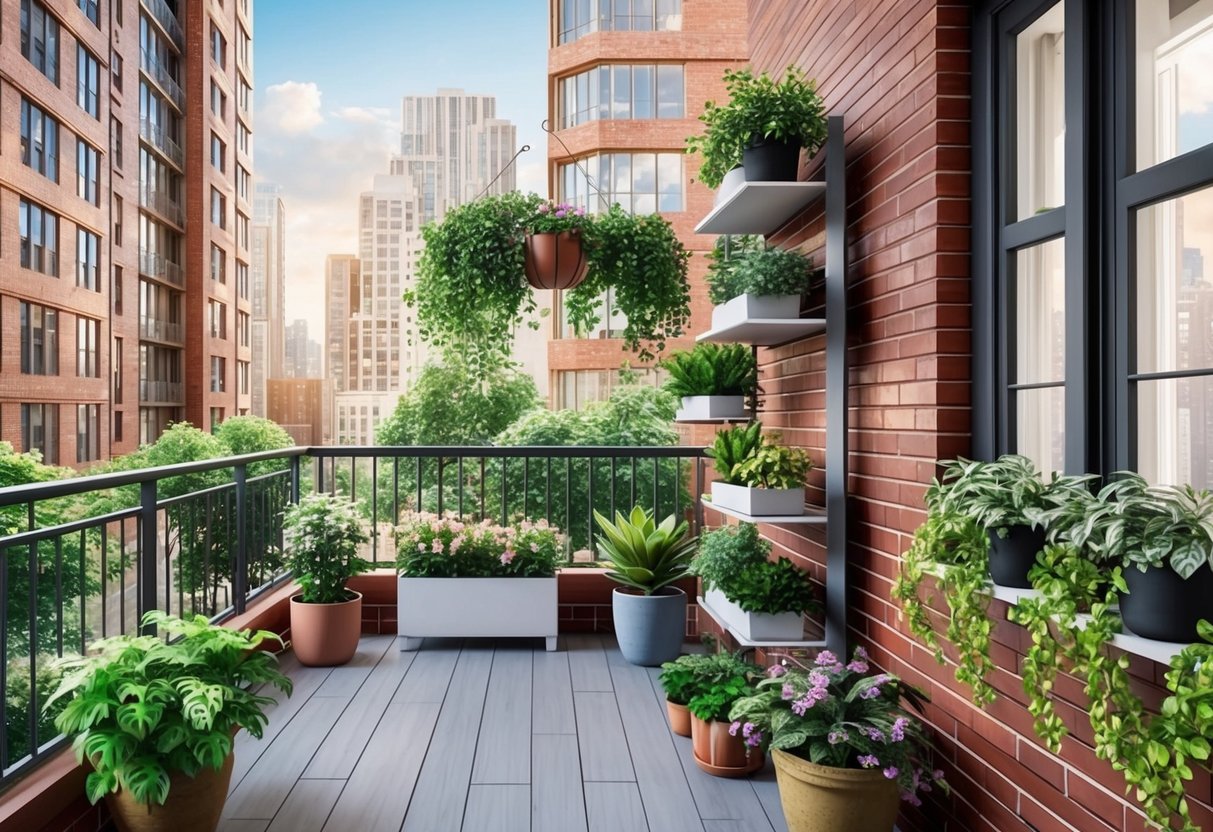
Digital Resources and Community Inspiration

Access to up-to-date digital platforms and engagement with active gardening communities is essential for both novice and experienced vertical gardeners. Specific websites offer tutorials, design ideas, and plant recommendations.
Online forums and social groups provide the opportunity to exchange tips and celebrate successful vertical garden projects.
Recommended Websites and Learning Platforms
A wide selection of reputable websites offer step-by-step guides, video tutorials, and expert advice on vertical gardening. Sites like This Old House explain how to create a vertical garden for small spaces, including plant selection strategies.
Country Living showcases diverse DIY vertical garden ideas involving window boxes, wall planters, and trellises. Beginners can also benefit from educational platforms like YouTube, where channels focus on space-saving garden structures, watering solutions, and care for various plant species.
Comprehensive online guides, such as those provided by Rise Gardens, help users choose suitable plant varieties and troubleshoot common indoor gardening issues. Many of these websites also include printable resources, design plans, and product reviews.
Connecting with Urban Gardening Communities
Engagement with online urban gardening communities encourages learning and innovation for vertical garden enthusiasts. Popular forums and social media groups offer platforms for sharing successes, solving challenges, and exchanging local tips.
City-based Facebook Groups, subreddits, and specialized gardening forums feature discussion threads on trellis designs, irrigation methods, and plant selection tailored to limited spaces and vertical gardens. Virtual meetups, live Q&A sessions, and seasonal photo contests help foster ongoing knowledge, motivation, and creative inspiration.
Many urban gardening communities focus on sustainability, sharing container hacks and affordable solutions for balconies, patios, and apartments. For practical advice and local support, sites like SeedMoney offer resources, funding ideas, and a network for home growers.
Regular participation in these communities keeps gardeners current with trends and allows easy troubleshooting with experienced peers.
Frequently Asked Questions
Vertical gardening is a practical way to maximize limited space, grow diverse plant types, and create a green space in both small urban apartments and larger homes. Careful selection of plant species, gardening systems, affordable materials, and layout design can make a vertical garden more accessible and productive for anyone.
What are the best plant species for a vertical garden?
Herbs such as basil, thyme, mint, and oregano adapt well to vertical gardens because of their shallow root systems. Succulents, ferns, pothos, and philodendrons are also popular choices due to their resilience and minimal maintenance needs.
Strawberries, lettuce, and small flowers like pansies can thrive vertically and offer decorative and edible benefits.
How can I create a vertical garden in a limited space?
Residents with limited space can utilize hanging planters, wall-mounted pockets, and stackable planter boxes arranged on balconies or interior walls. These options use vertical height instead of floor space and can transform unused areas into productive gardens.
Attaching lightweight planters directly to a wall or fence helps maximize green space without overwhelming small rooms or patios. More ideas and tips can be found in guides like this vertical gardening at home article.
What materials do I need to start a DIY vertical garden on a budget?
Affordable vertical gardens can be built using recycled or upcycled materials such as old wooden pallets, plastic bottles, felt pockets, or wire mesh. Potting soil, seeds or starter plants, and basic tools like a drill and screws are typically required.
Simple frame supports, hooks, and lightweight containers can be sourced from local hardware stores or online retailers, making the setup cost-effective.
Can vegetables be grown in a vertical garden and if so, which are most suitable?
Vegetable shrubs, climbing vines, and dwarf varieties are suitable for vertical gardening. Beans, peas, small tomatoes, squash, gourds, and certain leafy greens like spinach or lettuce do well when supported on trellises or in stacked planters.
Placing these vegetables near sturdy railings or walls ensures they have proper support and airflow. Tips for selecting the right types can be reviewed in this Quora guide on vertical vegetable gardening.
What are some effective vertical gardening systems for apartment dwellers?
Modular wall planters, hanging baskets, and pocket panels are efficient for indoor use and small balconies. Vertical hydroponic towers and compact shelf systems with integrated irrigation are also space-saving solutions.
Self-watering systems reduce daily care needs and are ideal for busy lifestyles, making apartment gardening simpler.
What are the primary advantages of establishing a vertical garden in urban settings?
Vertical gardens increase green space density in urban areas with limited land. They can improve air quality, reduce heat around buildings, and provide insulation.
These gardens allow city dwellers to cultivate herbs, flowers, or produce. This promotes well-being and sustainability.
Vertical gardens also introduce biodiversity. They can transform dull urban walls into visually appealing and functional greenery.
More space-maximizing advantages are discussed in this vertical gardening guide.